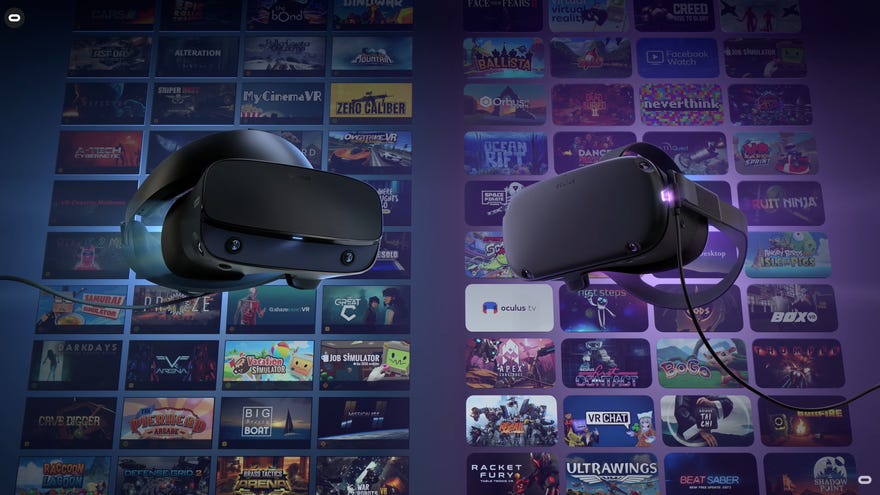Oculus Link beta now lets you play Rift games on your Oculus Quest, but only if you've got an Nvidia GPU
Here's what you need to get started
The Oculus Quest just got a little bit better. Well, for some people at least. As of November 18, Oculus' Link software is now in beta, meaning Quest owners can now play PC-based Rift games using their portable headset. There are, however, some pretty big catches, like the fact you need an Nvidia-based gaming PC in order for it to work because it currently doesn't support any kind of AMD graphics card. Read on to see exactly what you need in order to get started.
As you may already know, a large part of the Quest's appeal is the fact you don't need a high-powered gaming PC to play virtual reality games. It's tether-free, too, meaning you don't have to worry about tripping up on any pesky cables while you're off Beat-ing Sabers and what not.
Alas, in order for Oculus Link to work, you'll need to sacrifice that tether-free goodness and connect your Quest to a compatible gaming PC. Once you've plugged your headset into your PC's USB3 port, you'll then need to use the Oculus desktop app to browse and buy Rift games you want to play on your Quest. Here's what Oculus are currently recommending you have in your system:
Oculus Link recommended specs:
CPU: Intel Core i5-4590 / AMD Ryzen 5 1500X
RAM: 8GB
GPU: Nvidia GeForce GTX 1060 or above
OS: Windows 10
USB: 1x USB 3.0
Only certain types of USB3 cable and graphics cards are supported at the moment, however, and right now none of AMD's graphics cards fit the bill for some reason, including their brand-new RX 5000 series. Oculus say they're working directly with AMD "to support as many of their cards as possible by the time the beta period ends", but that's not much help for AMD owners hoping to get a taste of what Oculus Link has to offer right now.
Instead, you must have an Nvidia GTX 1060 or above. That's higher than the Rift's current recommended GPU, which states you only need a GTX 970 to get it running. For Oculus Link, however, the GTX 970 won't cut it, nor will the mobile version of Nvidia's GTX 1060M chips found in older gaming laptops. Nvidia Titan X cards are also supported, but not Titan Z.
Oculus Link also requires a "high quality" USB3 cable, and Oculus recommends using a USBC-to-C cable or a USBC-to-A cable that's at least 3m long which you know works well. So far, Oculus have given the thumbs up to the following Anker cables, which cost £7 in the UK and $8 in the US. Sadly, the charging cable that comes with the Quest isn't good enough, according to Oculus.
To help the situation, Oculus have said they'll be releasing their own "premium, custom optical fiber cable" later this year, but again, that's not much use for anyone looking to try it out now. Still, when it does eventually launch, it will be a massive 5m in length, which should hopefully give you a greater freedom of movement than other cables you can buy off the shelf.
Quite what this means for the future of Oculus' PC-based Rift headsets remains to be seen. The Rift S was only released back in March 2019, but when it currently costs the same as a 64GB Quest (£399 / $399), I know I'd rather have the option of removing that annoying cable from the equation as much as possible.









